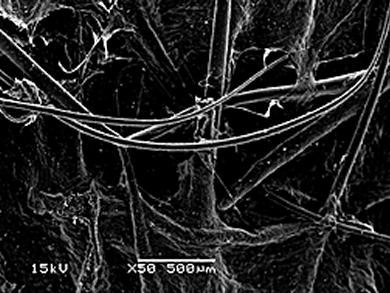Leather processing comprises a series of unit operations in which the process of unhairing is the first major step, preparing the hide for the tanning operation. The conventional unhairing process is the most polluting stage of this industry, since it uses hazardous chemicals, such as sodium sulfide and lime, representing approximately 80–90 % of the total pollution of leather manufacturing.
Aline Dettmer and colleagues, Federal University of Rio Grande do Sul, Porto Alegre, RS, Brazil, describe the screening and isolation of a new Bacillus subtilis strain and the production of its proteases for leather unhairing. They isolated the B. subtilis strain BLBc 11 from the aerobic sludge of a tannery. Using the Plackett-Burman and central composite design, the enzyme production by this bacterium was optimized.
Crude enzymatic extracts of B. subtilis BLBc 11 cultures were applied for the unhairing process of hides with excellent results. Unhairing and inter-fibrillary removal capabilities were evaluated by scanning electron microscopy and determination of proteoglycans and glycosaminoglycans.
This safe enzymatic preparation is suggested to replace the toxic chemicals commonly used in unhairing of hides.
- Optimization of the Biotechnological Process for Hide Unhairing in Substitution of Toxic Sulfides,
Aline Dettmer, Jhonnattas Coelho, Cavalheiro, Élita Cavalli, Daniele Misturini Rossi, Carolina de Souza Gusatti, Marco A. Záchia Ayub, Mariliz Gutterres,
Chem. Eng. Technol. 2012, 35 (5), 803–810.
DOI: 10.1002/ceat.201100350




